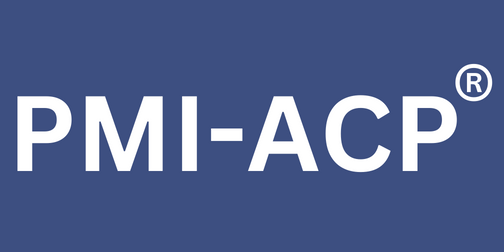
Mastering Project Scheduling Techniques
Posted On June 3, 2024 - 17:45 PM
Anybody who has ever worked on a project understands how crucial a well-planned timeline is. The key to success is a well-crafted project schedule that ensures timely delivery and keeps all parties in agreement. But how can you become an expert at project scheduling when there are so many shifting elements and unknowns?
You will gain the skills and information necessary to master scheduling from this blog. We'll examine common scheduling techniques, divide the procedure down into doable steps, and offer advice on how to stay on schedule with your project.
Laying the Groundwork: Crucial Stages in Project Scheduling
Before delving into certain methods, let us lay a solid foundation. These are the essential actions to take:
-
Define Your Project Scope: It's critical to have a firm grasp of the objectives and deliverables of your project. What do you hope to accomplish? What are the results or end products?
-
Divide the Work Into Doable Tasks: Big, vague jobs are intimidating and challenging to plan. Break up your project into smaller, easier-to-manage tasks.
-
Arrange Your Work: Determine the Interdependencies Among Tasks. What must be completed before proceeding to the following step?
-
Determine the Task Durations: Be Accurate! Give each activity enough time, taking into account the availability of resources and any potential obstacles.
-
Allocate Resources: Who is in charge of each task? Make that the correct individuals with the required skills are assigned to the appropriate tasks.
Selecting the Appropriate Tool for the Task: Common Project Scheduling Methods
Now that your project has a strong base, let's look at some common scheduling strategies:
Gantt charts show the schedule of your project visually, with tasks shown as horizontal bars on a calendar. Excellent for displaying the overall project flow, dependencies, and task durations.
The Critical Path Method (CPM) is a mathematical method that helps you determine which of your project's dependent activities are in the longest sequence. The "critical path" determines how long the project must take at minimum.
Program Evaluation and Review Technique (PERT): PERT takes task length variability into account, just like CPM does. It creates a more probabilistic project timetable by utilizing three-time estimates: optimistic, most likely, and pessimistic.
Resource levelling is a tactic for modifying your plans so as to prevent using up too much resources. Extending deadlines or rearranging tasks could be necessary to guarantee effective resource distribution.
Managing Your Timetable: Strategies for Sustaining Your Project
There may be hiccups in even the best-laid plans. These pointers will help you keep on course:
-
Effective Communication: Inform your staff of any alterations or additions to the timetable.
-
Regularly Monitor Your Progress: Keep tabs on your development to spot any possible hold-ups early on.
-
Be Adaptable and Flexible: Unexpected events happen. As circumstances change, be ready to modify your plan while maintaining the key path as your top priority.
-
Employ project: management software to collaborate with your team, automate work scheduling, and monitor progress.
Establishing the Base: The Basis for Project Scheduling
Before we go into particular strategies, let's lay a solid foundation. The following are the crucial actions to take:
-
Clarity in Scope: The Key to Success: It all begins with having a precise grasp of the scope of your project. What do you hope to accomplish? What are the completed products? Clearly define the scope of your project; this will inform all other decisions you make.
-
Task Sequence: Partitioning the Elephant Scheduling large, ambiguous activities can be intimidating. Break down your project into smaller, easier-to-manage tasks to overcome this challenge. Imagine it as much easier to handle if you broke down a gigantic elephant into bite-sized parts.
-
Dominoes of Dependency: Comprehending the Chain Reaction Determine how your duties relate to each other. What must be finished in order to proceed to the next step? These dependencies resemble dominoes; if one topples, it could cause delays for the duration of the project. Comprehending these connections is essential to developing a practical timetable.
-
Estimating Time: The Skill of Guesstimating This brings us to the less-than-exact science of task duration estimation. Keep it grounded! Never underestimate the amount of time needed for any given work, taking into account the availability of resources and any obstacles. Recall that it's preferable to estimate too high and then make adjustments rather than underestimating and rushing.
-
Allocating Resources: Choosing the Correct Personnel for the Task For each job, who will be the champions? Make that the correct individuals with the required skills are assigned to the appropriate tasks.
Keeping Up with the Times: Strategies for Keeping Your Schedule
There will inevitably be hiccups in even the most well-planned timetable. The following useful advice will help you remain on top of developments and stick to your project timeline:
-
It's All About Communication: It's critical to inform your staff. Updates or modifications to the timetable should be communicated as soon as possible and openly. A knowledgeable team is a more capable team.
-
Frequent Progress Monitoring: Progress reports are nothing to be unfamiliar with! Regularly monitor your progress to spot any possible delays early on. The sooner an issue is identified, the sooner remedial action can be taken.
-
Accept Flexibility: Things don't always go as planned in the real world or on projects. As circumstances change, be ready to modify your plan while maintaining the key path as your top priority. Consider it similar to driving on a winding road: you can still get where you're going even if you have to change direction.
-
Technology Saves the Day: A multitude of project management applications are available to make the scheduling process more efficient. These tools allow for visual progress tracking and automated work scheduling.
In summary:
You're well on your way to becoming a scheduling champion with the knowledge and resources offered here, but mastering project scheduling techniques is an ongoing adventure. Keep in mind that a well-written schedule is a dynamic roadmap that directs your project toward success rather than just being a static document. You can become a project delivery hero by adhering to these guidelines, using the appropriate methods, and remaining flexible. Thus, master the timer, rise to the occasion, and observe as your initiatives precisely reach their goals!
Check out this blog : Waterfall VS. Agile methodogolies : A comprehensive Comparison


















